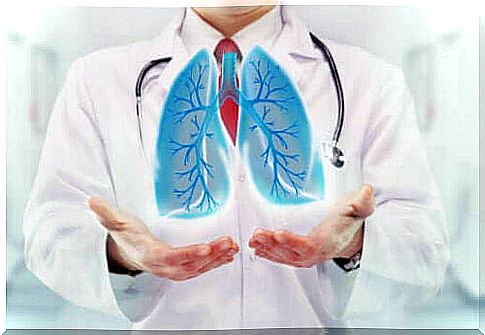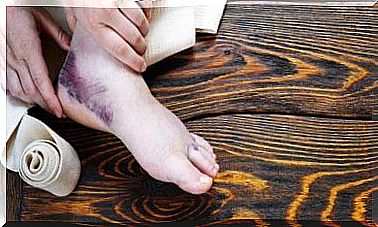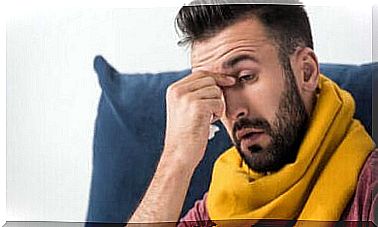Why Is It Hard To Breathe When I Exercise?

More and more people are becoming aware that exercise is a fundamental part of a healthy lifestyle. However, if you don’t do it often or don’t train correctly, breathing during exercise can become difficult.
Breathing difficulties during exercise can manifest as shortness of breath, coughing, narrowing of the throat or wheezing (whistling sound when air flows down your throat).
In general, there are many reasons why breathing problems can develop during physical activity. In this article we analyze everything that has to do with breathing during exercise.
What function does breathing have?
Breathing has different kinds of functions. However, the main purpose of breathing is to maintain the functionality of the body by:
- Supply oxygen to tissues (English link) and CO2 waste, created by removing cells.
- Constant maintenance of the acidity of the blood, which is measured by the pH. The pH has a narrow healthy range between 7.35 and 7.45. Respiration is responsible for keeping the blood within this range by expelling CO2.
Ventilation and breathing

Breathing is an essential process that allows you to oxygenate all tissues in your body. To define breathing, you need to understand the concept of ventilation and its existing types.
On the one hand, we have pulmonary ventilation, the process by which air enters and exits the lungs. This mechanism occurs through the neural activation of the respiratory muscles and the pressure differences between the lungs and the outside air.
On the other hand, all this air you breathe doesn’t reach the alveoli to produce gas exchange and carry oxygen to the tissues. Instead, it stays in the respiratory tract (bronchi, trachea, etc.). This unused air occupies a volume called “anatomical dead space.”
If we subtract the volume of air entering through pulmonary ventilation and that of the air from the physiological dead space, we get air that actually reaches the alveoli and is used. This volume reaching the alveoli is part of the alveolar ventilation mechanism.
Depending on the way you breathe, whether you’re doing it deeper or shallower, whether it’s hot or cold, whether you’re exercising or not, the amount of air that actually reaches the alveoli can vary.
Types of ventilation
There are two different types of ventilation. However, both are represented by the same variables (with some differences). This is because this process is essentially defined as the volume of air coming in per minute when you inhale. This is found by multiplying these two quantities:
- Respiratory rate: how many times you breathe per minute. On average, a healthy person at rest usually takes 12 breaths per minute.
- Tidal Volume: The volume of air that comes in in one breath. A healthy person usually gets 0.5 liters of air per breath at rest.
A healthy person therefore usually has a ventilation that is approximately equal to 6 liters of air per minute. The volume of someone who makes breathing difficult is therefore lower.
Breathing during exercise: what happens?

When you are exercising, the muscles you are training with carry out two important processes. These processes consist of the following:
- They use the oxygen that comes from the blood to get energy and to be able to move.
- Since they have to work a lot, they also get energy from other processes that do not require oxygen. However, these processes generate lactate, which is released into the blood and acidifies it.
Due to these processes, the blood circulating through the muscle tissues remains deoxygenated and acidified. This can put your body at risk. Fortunately, to prevent this, the brain, through receptors it has distributed throughout the body, becomes aware of these changes and causes you to:
- Breathe faster by increasing your breathing rate.
- Breathe much deeper so that more air can enter the lungs for each breath. In other words, your breathing volume increases.
As your respiratory rate and tidal volume increase, pulmonary and alveolar ventilation will also increase. This basically means the following:
- More oxygen enters the blood to meet the needs of the muscles.
- Your body emits more CO2, eliminates the acid generated by muscles and keeps the pH of the blood stable.
Stages of Breathing During Exercise
According to studies, researchers have established that when you exercise there are three phases. In the first and second phase, ventilation rises abruptly to carry out the activity. On reaching the third stage, the body adapts and ventilation remains stable.
Why is it hard to breathe when I exercise?
If you are not used to exercise, you may feel suffocated at first. However, this effect is completely normal. Your respiratory system has to work itself to maintain normal blood conditions and keep them from changing in the ways we’ve mentioned.
However, as you continue to exercise, breathing becomes easier as your body gets used to the new situation. On the other hand, you should know that it doesn’t feel the same when you train at the same intensity all the time as it does when you do an exercise that increases in intensity.
With an exercise that gets more intense over time, your body will not get used to it and will continue to demand more oxygen. Your breathing will therefore become even faster. Of course, you keep sucking in the same volume of air for each breath.
In professional athletes, we can see that their respiratory rate is much lower. These are professional athletes who have trained their respiratory system to absorb more air. For example, they breathe in more deeply and hold the air in the lungs much longer, so they have to breathe less.
When to see a doctor if you have trouble breathing while exercising
If it is difficult to breathe during exercise, it may indicate that you are not used to it. However, it is important to note that it can also be a sign of other respiratory or cardiovascular conditions. You should therefore watch for symptoms such as:
- Shortness of breath or choking, so strong that you cannot continue the activity.
- Wheezing or whistling while breathing.
- Dizziness or fainting.
- Feeling that your chest is expanding and contracting too much.
If you experience any of these symptoms, you should see your doctor to determine if they are caused by an underlying condition. If so, the professional will give you treatment depending on the problem.









